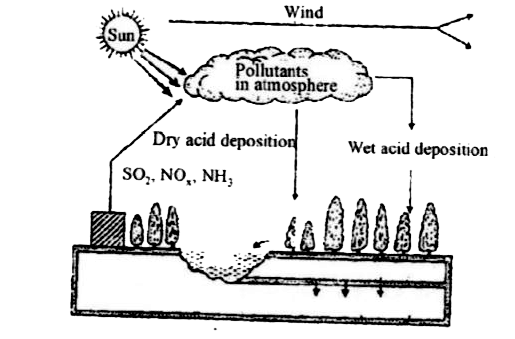Which phenomenon leads us to the conclusion that light is transverse in nature ?
refraction of light
diffraction of light
dispersion of light
polarization of light.
The correct Answer is:D
To determine which phenomenon leads us to conclude that light is transverse in nature, we can analyze the options provided:
1. Understanding Wave Types:
- There are two main types of waves: longitudinal and transverse.
- In longitudinal waves, the vibrations of the particles are in the same direction as the wave propagation.
- In transverse waves, the vibrations are perpendicular to the direction of wave propagation.
2. Analyzing the Options:
- Refraction of Light: This is the bending of light as it passes from one medium to another. It does not provide evidence for the transverse nature of light.
- Diffraction of Light: This refers to the bending of light waves around obstacles or the spreading of light waves when they pass through a narrow aperture. Again, this does not specifically indicate that light is transverse.
- Dispersion of Light: This is the process of splitting light into its constituent colors when it passes through a prism. While it demonstrates properties of light, it does not confirm its transverse nature.
- Polarization of Light: This phenomenon involves the orientation of the vibrations of light waves. When light is polarized, the electric field vibrations occur in a specific direction, which is perpendicular to the direction of wave propagation. This characteristic is a definitive indicator that light behaves as a transverse wave.
3. Conclusion:
- Among the options provided, polarization of light is the phenomenon that leads us to conclude that light is transverse in nature. This is because the electric field associated with light waves vibrates in a direction that is perpendicular to the direction of wave travel.
Final Answer:
The phenomenon that leads us to conclude that light is transverse in nature is polarization of light.
---
- There are two main types of waves: longitudinal and transverse.
- In longitudinal waves, the vibrations of the particles are in the same direction as the wave propagation.
- In transverse waves, the vibrations are perpendicular to the direction of wave propagation.
- Refraction of Light: This is the bending of light as it passes from one medium to another. It does not provide evidence for the transverse nature of light.
- Diffraction of Light: This refers to the bending of light waves around obstacles or the spreading of light waves when they pass through a narrow aperture. Again, this does not specifically indicate that light is transverse.
- Dispersion of Light: This is the process of splitting light into its constituent colors when it passes through a prism. While it demonstrates properties of light, it does not confirm its transverse nature.
- Polarization of Light: This phenomenon involves the orientation of the vibrations of light waves. When light is polarized, the electric field vibrations occur in a specific direction, which is perpendicular to the direction of wave propagation. This characteristic is a definitive indicator that light behaves as a transverse wave.
- Among the options provided, polarization of light is the phenomenon that leads us to conclude that light is transverse in nature. This is because the electric field associated with light waves vibrates in a direction that is perpendicular to the direction of wave travel.
The phenomenon that leads us to conclude that light is transverse in nature is polarization of light.
Topper's Solved these Questions
- WAVE OPTICSBook:NCERT FINGERTPS ENGLISHChapter:WAVE OPTICSExercise:HIGHER ORDER THINKING SKILLS
Explore 8 Videos
- WAVE OPTICSBook:NCERT FINGERTPS ENGLISHChapter:WAVE OPTICSExercise:NCERT EXEMPLAR PROBLEMS
Explore 5 Videos
- SEMICONDUCTOR ELECTRONICS : MATERIALS , DEVICES AND SIMPLE CIRCUITS Book:NCERT FINGERTPS ENGLISHChapter:SEMICONDUCTOR ELECTRONICS : MATERIALS , DEVICES AND SIMPLE CIRCUITS Exercise:Assertion And Reason
Explore 15 Videos
Similar Questions
Knowledge Check
Which phenomenon best supports the theory that matter has a wave nature?
AElectron momentumBElectron diffractionCPhoton momentumDPhoton diffraction
Which phenomenon is essential for the formation of new species along with natural selection ?
View SolutionA phenomenon which works opposite to the linkage is
View SolutionWhich of the following properties show that light is a transverse wave? a) Reflection b) Interference c) Diffraction d) Polarization
View SolutionA: Light waves can be polarised.
R: Light waves are transverse in nature.
View SolutionHuygen.s principle of secondary wavelets can be used to
a) deduce the laws of rectraction of light
b) deduce the laws of refraction of light
c) explain the transverse nature of light waves
d) predict the location of a wavefront as time passes
View SolutionWhich of the following phenomenon is not common to sound and light waves ?
View SolutionWhich of the following phenomenon is not common to sound and light waves
View Solution


